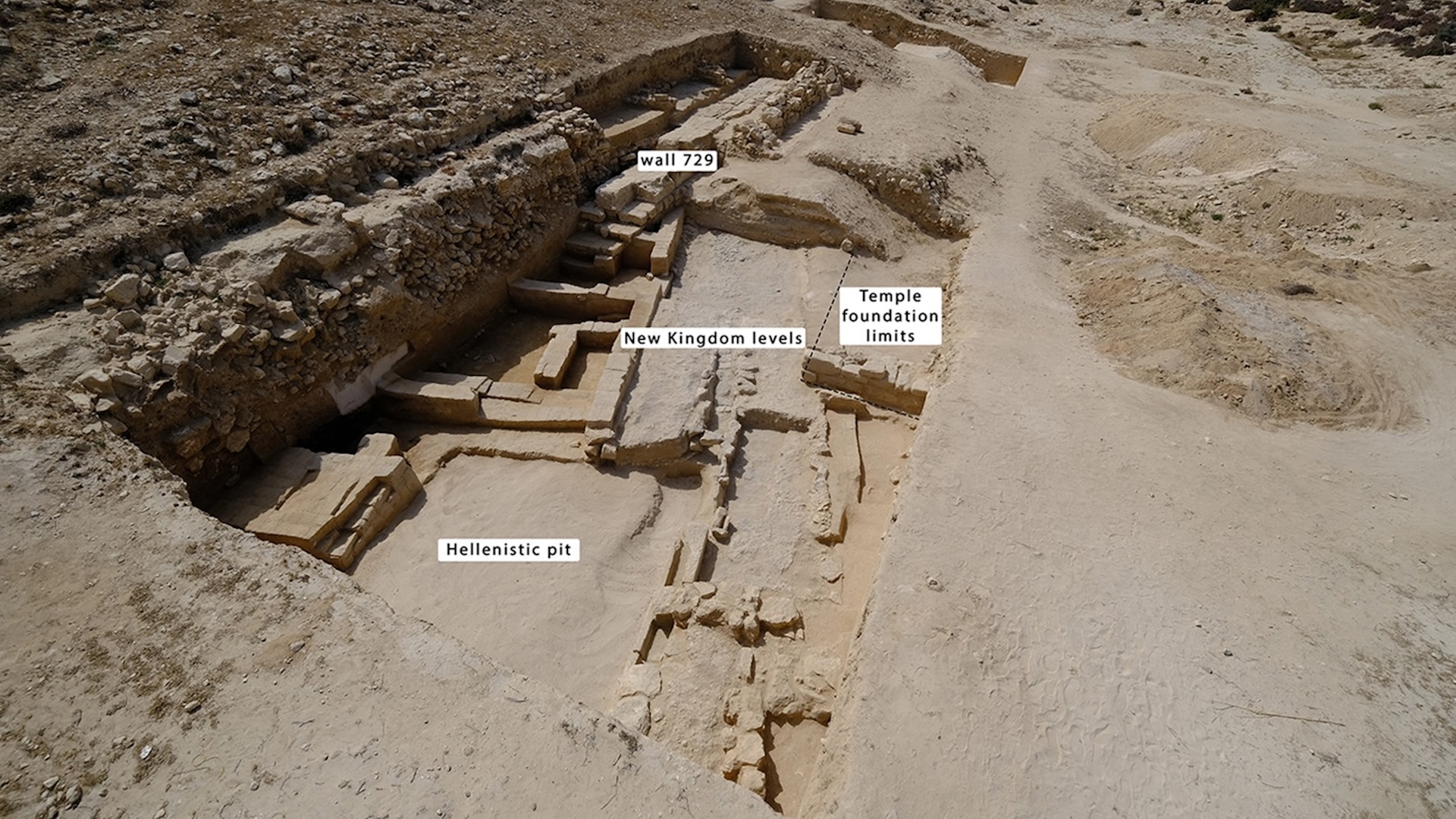
Archaeologists in Egypt have uncovered the remains of a “major” 3,400-year-old town dating to the New Kingdom that was possibly built by King Tutankhamun‘s father and later added to by Ramesses II, a new study finds.
The settlement was found at the site of Kom el-Nugus in northern Egypt, about 27 miles (43 kilometers) west of Alexandria on a rocky ridge between the Mediterranean Sea and Lake Mariout. Previously, Egyptologists thought the site was not inhabited until later times, when the Greeks founded their own settlement and necropolis there around 332 B.C., during Egypt’s Hellenistic period.
Researchers found the older ancient Egyptian settlement while they were studying the Greek one. An unexpected discovery of mudbrick dating to the New Kingdom (circa 1550 to 1070 B.C.) revealed the earliest known Egyptian settlement north of Lake Mariout, according to the study, which was published Jan. 23 in the journal Antiquity.
It’s not clear exactly how large the settlement was, “but the quality of the remains, their planned organization around a street, could suggest a fairly large-scale occupation,” study author Sylvain Dhennin, an archaeologist with the French National Center for Scientific Research (CNRS), told Live Science in an email. The street was designed to drain surface water and protect buildings from water erosion.
“There was a temple, built by King Ramses II, as well as private funerary chapels, which mention military personnel,” said Dhennin, who is leading excavations at the site. “If the settlement was indeed military in nature, it’s possible that there was also a fortified wall and administrative buildings.”
Related: What did King Tut look like?
One particularly interesting find is a stamp on part of an amphora jar that has the name of Merytaton (also spelled Meritaten) on it. Merytaton was the daughter of the pharaoh Akhenaten (reign 1349 to 1336 B.C.) and his wife Nefertiti. Akhenaten unleashed a religious revolution that tried to focus Egypt’s religion around the worship of Aten, the sun disk. His son, King Tutankhamun (ruled circa 1336 to 1327 B.C.), later brought back Egypt’s traditional polytheistic religion.
“The presence of this stamp probably indicates the production of wine belonging to a royal estate” that dates back to the time of Merytaton, Dhennin said. “The vineyards on the margins of Egypt were probably protected by the military and formed part of a pioneering front to occupy this region towards the desert,” he said, noting that it’s possible that this settlement was founded during the reign of Akhenaten.
Roger Forshaw, an honorary lecturer at the KNH Centre for Biomedical Egyptology at the University of Manchester who was not involved with the research, praised the team’s work and noted that the “the presence of a temple underscores its strategic and cultural importance.”
Forshaw also noted the sophisticated design of the street. “This street was ingeniously designed with a water-collecting system to drain surface water and protect the fragile mudbrick walls,” Forshaw said.
Excavations at the site are ongoing, and Dhennin said they may help reveal how large the settlement was and when exactly it was founded. Another question is what Egyptians called the settlement in ancient times.
Ancient Egypt quiz: Test your smarts about pyramids, hieroglyphs and King Tut



